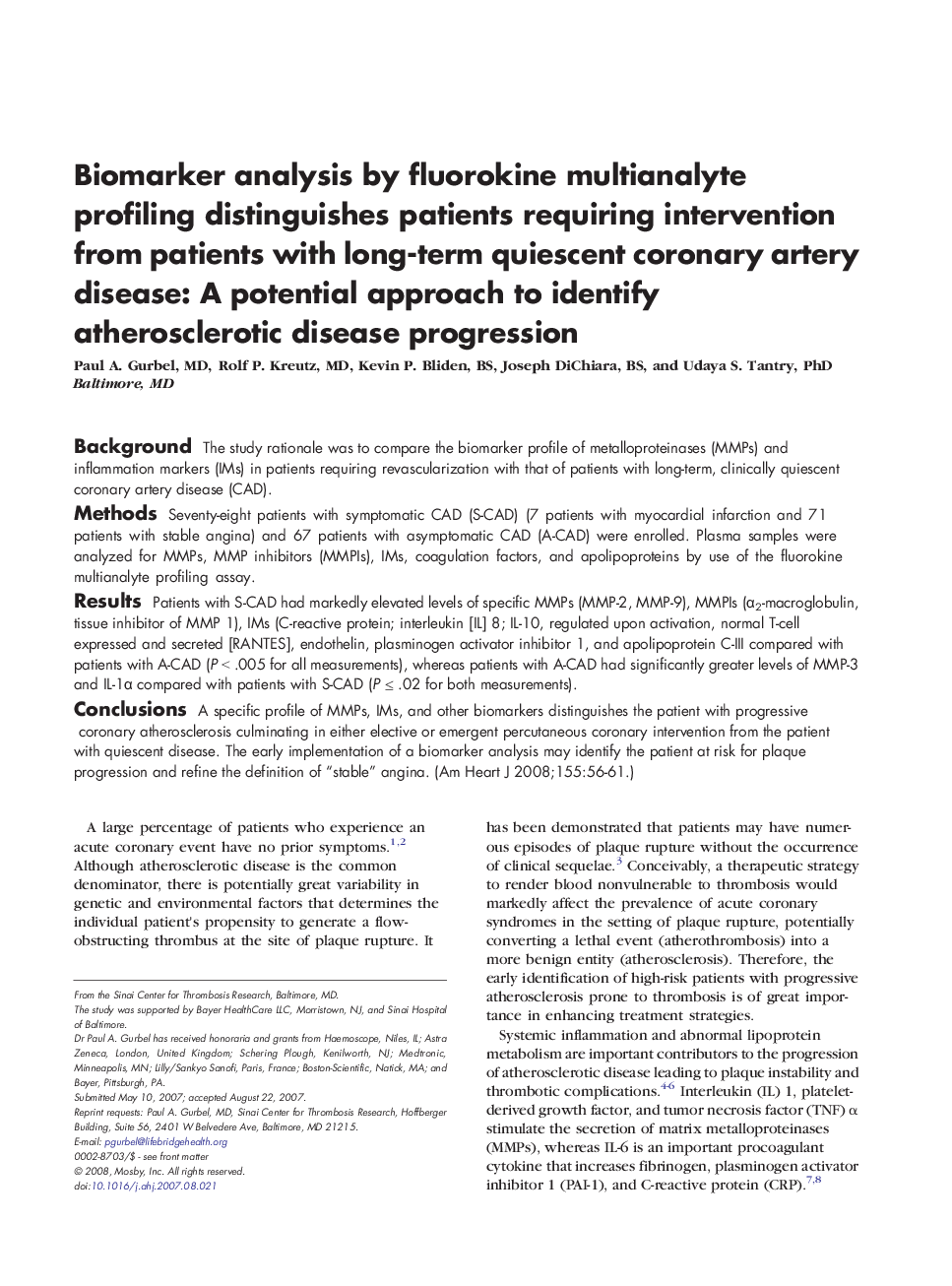| Article ID | Journal | Published Year | Pages | File Type |
|---|---|---|---|---|
| 2850946 | American Heart Journal | 2008 | 6 Pages |
BackgroundThe study rationale was to compare the biomarker profile of metalloproteinases (MMPs) and inflammation markers (IMs) in patients requiring revascularization with that of patients with long-term, clinically quiescent coronary artery disease (CAD).MethodsSeventy-eight patients with symptomatic CAD (S-CAD) (7 patients with myocardial infarction and 71 patients with stable angina) and 67 patients with asymptomatic CAD (A-CAD) were enrolled. Plasma samples were analyzed for MMPs, MMP inhibitors (MMPIs), IMs, coagulation factors, and apolipoproteins by use of the fluorokine multianalyte profiling assay.ResultsPatients with S-CAD had markedly elevated levels of specific MMPs (MMP-2, MMP-9), MMPIs (α2-macroglobulin, tissue inhibitor of MMP 1), IMs (C-reactive protein; interleukin [IL] 8; IL-10, regulated upon activation, normal T-cell expressed and secreted [RANTES], endothelin, plasminogen activator inhibitor 1, and apolipoprotein C-III compared with patients with A-CAD (P < .005 for all measurements), whereas patients with A-CAD had significantly greater levels of MMP-3 and IL-1α compared with patients with S-CAD (P ≤ .02 for both measurements).ConclusionsA specific profile of MMPs, IMs, and other biomarkers distinguishes the patient with progressive coronary atherosclerosis culminating in either elective or emergent percutaneous coronary intervention from the patient with quiescent disease. The early implementation of a biomarker analysis may identify the patient at risk for plaque progression and refine the definition of “stable” angina.
